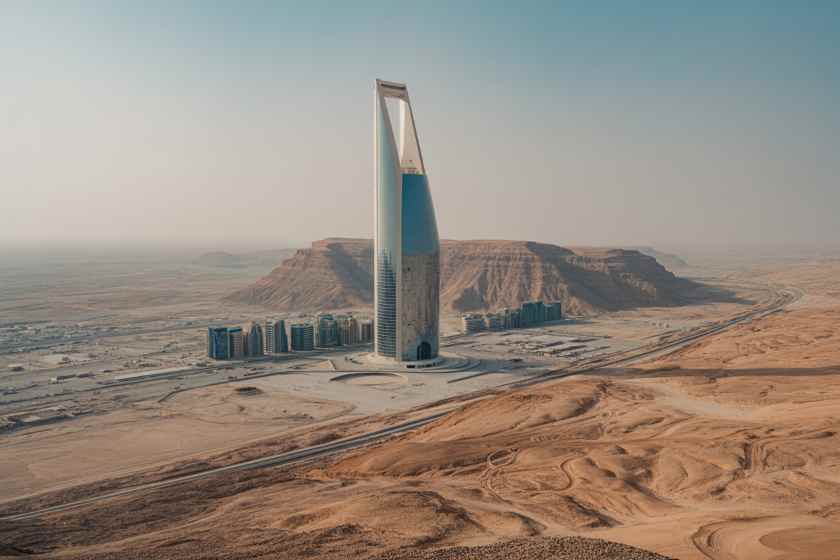Published on
November 2, 2025

One of the recent developments of note involving the Saudi government is the change to the Entry Visa regulations for Umrah pilgrims, where the period of validity is now reduced from 3 months to 1 month. This decision seeks to simplify Umrah visa regulations, along with improving the overall Umrah experience for pilgrims. The decision is supposed to have ramifications on Umrah pilgrims and the tourism industry of Saudi Arabia.
New Visa Rules for Umrah Pilgrims
As per Umrah and Hajj ministry sources, the new Umrah entry visa will now only last for 30 days from the date of issuance. However, the duration of the stay within Saudi Arabia still remains unchanged at three months from the date of entry. This means that while the entry visa must be used within 30 days of issuance, pilgrims will still be able to spend three months in Saudi Arabia to complete tourism and Umrah activities. (al‑arabiya.com)
This shift is in line with the steps Saudi Arabia is taking to control and streamline the flow of foreign pilgrims into the holy sites in Makkah and Madinah. The new rule will also assist in addressing the surplus of Umrah visas that have become available in recent years, especially in the post-COVID-19 restriction period.
Trends in Travel and Pilgrimage to Saudi Arabia
Saudi Arabia is now a centre of pilgrimage, welcoming millions for Umrah and Hajj. In 2025, over four million Umrah visas have been issued, and the demand for religious tourism is evident. The Kingdom is trying to improve the tourism aspects of the pilgrimage and visitor experience, which focuses on religious travel.
This year, Saudi Arabia set records in the number of visitors and the amount spent on tourism for the year’s Umrah season. The Kingdom’s Vision 2030 target of economic diversification and the development of Saudi Arabia’s global tourism industry depend heavily on the pilgrimage sector. Changes to visa policies indicate a refined strategic approach to the sustainable management of the carrying capacity of the country.
Effects on Dava and Travel Planning
Considering the restrictions that have been applied to the Umrah visa recently, pilgrims will need to be more cautious in planning their trip with respect to the visa. Here are some important notes for travelers:
Travel to Saudi Arabia at least Umrah visa for 30 days: Pilgrims need to take extra caution and plan their Umrah visa within the given time frame. By failing to make proper arrangements, the individual runs the risk of having their visa completely nullified.
The visa restriction: pilgrims are still able to apply and to their satisfaction, plan their visa dates for some time in the future. This allows the mob who are resting and are still able to carry out multiple religious duties and can wander across Saudi Arabia within its cities, Riyadh, Dammam and Jeddah with its leisure package.
Visa application and planning: pilgrims are to accept the fact that the visa would need to be applied for time passes for the date of the planned visa using the best plan to devise a set of dates which are to avoid the time the Umrah visa has been set to applicable.
How Does This Impact Saudi Arabia’s Tourism Sector
As part of the kingdom’s attempts to streamline tourism and protect the sanctity of Umrah pilgrimage visits, restricting the Umrah visa validity period is a step further in the strategy. Saudi Arabia is also focusing on expanding tourism beyond religion, incorporating culture, adventure and eco-tourism. These developments also seem to be part of a strategy to manage pilgrimage travel and subsequent travel to Saudi Arabia for tourism.
Saudi Arabia’s tourism infrastructure is poised to offer increasing options for religious tourists and those in search of leisure and culture. This includes the capital Riyadh and other cities, which offer modern amenities and beautiful coastlines, along with the archaeological marvels of Al Ula.
Travel Tips for Foreign Pilgrims
Here’s a quick summary of suggestions for visitors and pilgrims.
Avoid skipping planned travel dates. Arrive within 30 days of receiving the visa otherwise, you forfeit the visa.
Visit airline offices to plan your itinerary. They can suggest routes and travel schedules that meet entry conditions.
Explore additional experiences: Within the time allocated to perform the Umrah pilgrimage in Saudi Arabia, pilgrims have the opportunity to visit several additional sites of interest, take part in the Saudi culture, and even attend some of the many festivals and other events which take place throughout the Kingdom.
Documentation: Keep in mind that all requested travel and visa paperwork needs to be properly checked and organised days before the intended date of the trip.
Conclusion: Changes to Umrah Travel Regulations.
The Kingdom of Saudi Arabia has in place a new set of policies which travel and religious pilgrims need to observe to be able to travel to the Kingdom for Umrah. The changes which have been made regarding the Umrah visa have a great significance in the way a person attempts to travel for the purpose of Umrah. The focus of the Umrah visa changes shifts towards the easing of the travel restrictions more towards the comfort and ease of travel and pilgrimage of pilgrims to the Kingdom. The new policies on which the visa is issued state that there is no more overcrowding, as the time period set on the visa is very limited.
The new policies which have been set in place are expected to be followed and observed by all pilgrims. The changes which have been made are expected to help in phenomenally improving the ease of travel to visit the religious and cultural sites and in turn help in the millions of visitors who come each year for tourism.
In closing, Saudi Arabia’s issued new regulations for Umrah visa, and its implementation marks a step forward in the optimisation, streamlining and management of religious tourism with better systems for both visitors and pilgrims. The newly shortened entry visa validity and its conditions will help improve the management of orderly visits and the inflow of business to the Kingdom, along with its infrastructure supporting the religious, as well as the broader tourism industry.






